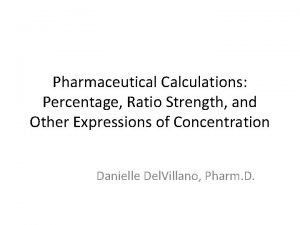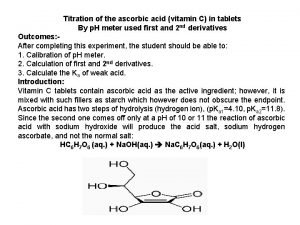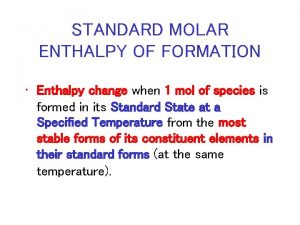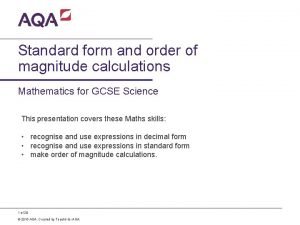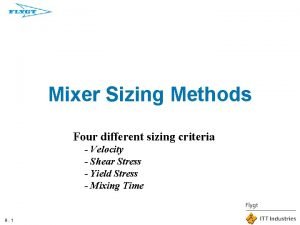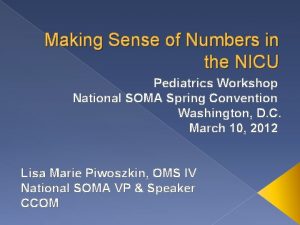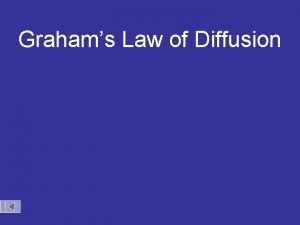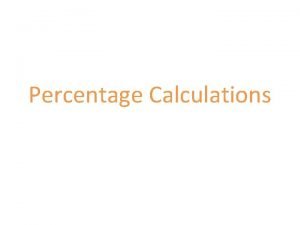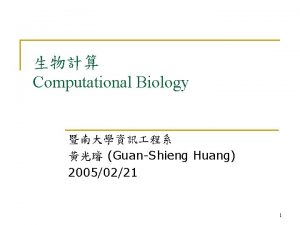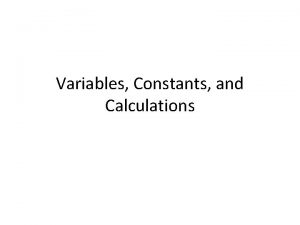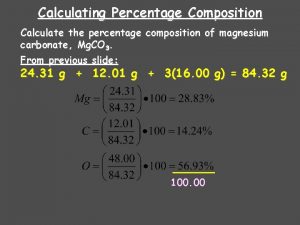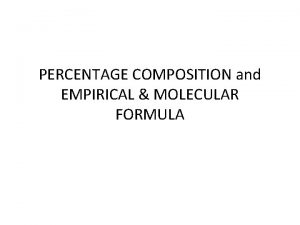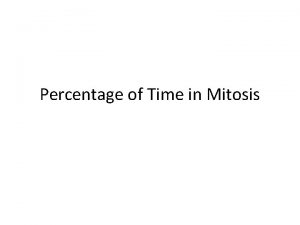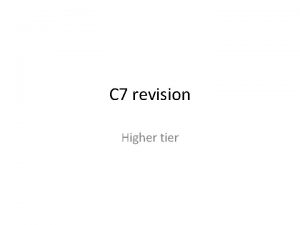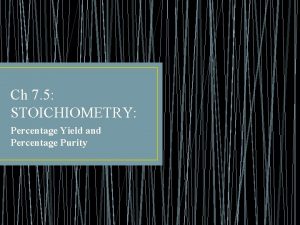A system of dosimetric calculations 20050221 Percentage depth



























- Slides: 27

A system of dosimetric calculations 2005/02/21

Percentage depth dose (PDD)

PDD

PDD vs. SSD

Mayneord factor Ø The dependence of PDD on SSD unsuitable for isocentric techiniques

Tissue Air Ratios (TAR)

The limitations of TAR • It’s hard to measure in free space when the beam energy higher than Co-60. • As the beam energy increases, the size of the chamber build-up for in-air measurements has to be increased. • Karzmark et al. tissue-phantom ratio (TPR) • Holt et al. tissue-maximum ratio (TMR)

Effective primary dose • The effective primary in a phantom may be thought of as the dose at depth minus the phantom scatter. • The effective primary dose may be defined as the depth dose excepted in the field when scattering volume is reduced to zero while keeping the collimator opening constant.

Collimator scatter factor (Sc) • output factor • It may be defined as the ratio of the output in air for a given field to that for a reference field. • Sc may be measured with an ion chamber with a build-up cap of a size large enough to provide maximum dose build-up for the given energy beam.

Phantom scatter factor (Sp) • It takes into account the change in scatter radiation originating in the phantom at a reference depth as the field size is changed. • At the depth of maximum dose may be defined as BSF

Total scatter factor • It’s defined as the dose rate a reference depth for a given field size r divided by the dose rate at the same point and depth for the reference field size(10*10 cm). • It contains both the collimator and phantom scatter.

Arrangement for measuring Sc and Sc, p

Tissue-Phantom Ratio (TPR) • It’s defined as the ratio of the dose at a given point in phantom to the dose at the same point at a fixed reference depth, usually 5 cm. • TPR(r)=TPR(0)+SPR(r) The corresponding quantity for the scattered Dose is called the scattered-phantom ratio

The definition of TPR/TMR

Tissue-Maximum Ratio (TMR) • TMR is a special case of TPR. • It may be defined as the ration of the dose at a given point in phantom to the dose at the same point at the reference depth of maximum dose.

Properties of TMR • TMR is independent of SSD • FS ↑, TMR ↑ • depth ↑, TMR ↓

The area factor • It’s the ratio of the dose rate for a given field size to that of a reference field size, usually 10 * 10 cm. • The dose rate for a reference field multiplied by the area factor for the treated field gives the dose rate for the treated field. • The dose rates may have been measured and tabulated for a large number of field sizes, which eliminates the need for an area factor. • The c. Gy/MU may have been set so that 1 c. Gy is the same as 1 MU for a reference field, is usually 10 * 10 cm.

Dose-Calculation’s Parameters • • Prescribed dose SSD: PDD SAD: TAR, TMP, TPR Field size factor (Khan: Sc, p) Dose per Monitor Unit (Dose/MU) Accessory factors ( tray, wedge…etc. ) MU

Techniques in treating patients • Fixed source-surface distance technique • Fixed source-axis distance technique

Fixed source-surface distance technique

Dose calculation at depth of maximum dose • Consider the treatment of a 12 * 12 cm field using a 4 -MV photon beam at 100 -cm SSD. • The Dose/MU for a 10 * 10 cm field is 1. • The field size factor for 12 * 12 cm is 1. 03. • To find the necessary to deliver prescribed Dmax dose:

To deliver 200 c. Gy at Dmax • which for 4 MV is at 1 -cm depth, the number of MU would be:

To deliver 200 c. Gy at 5 cm

Fixed source-axis distance technique

Parallel opposed fields using an isocentric technique • A treatment is delivered via equally weighted parallel opposed beams using 4 MV photon beams. • The number of MU is found from

To deliver 100 c. Gy at 12 -cm depth • The patient is 24 cm in diameter, the SAD is 100 cm, and the fields are 12 * 12 cm. • The Dose/MU at Dmax is 1. 000 • The FSF is 1. 030 for 12 * 12 cm • The TMR from A-18 at 12 -cm depth is 0. 716.

Thank You
 Structural steel connection calculations calculations
Structural steel connection calculations calculations Real depth and apparent depth
Real depth and apparent depth Percentage by strength formula
Percentage by strength formula Percentage calculations worksheet
Percentage calculations worksheet The relationship between strength and total quantity is
The relationship between strength and total quantity is A graphic system that creates the illusion of depth
A graphic system that creates the illusion of depth How question
How question Simple indexing
Simple indexing Vitamin c titration calculations
Vitamin c titration calculations Activity sheet 2 to risk or not to risk
Activity sheet 2 to risk or not to risk Level circuit surveying
Level circuit surveying Thinking algebraically answer key
Thinking algebraically answer key The calculation of quantities in chemical reactions
The calculation of quantities in chemical reactions Calculating enthalpy change
Calculating enthalpy change Order of magnitude calculator
Order of magnitude calculator Sap calculations chatham
Sap calculations chatham Condensed q formula for 4 inch hose
Condensed q formula for 4 inch hose Constant and falling rate period of drying
Constant and falling rate period of drying Double pipe
Double pipe How to calculate tpn calories
How to calculate tpn calories Drip rate calculation formula
Drip rate calculation formula Mixer sizing calculations
Mixer sizing calculations How to calculate water tariffs grade 11
How to calculate water tariffs grade 11 How to do tpn calculations
How to do tpn calculations Sap calculations islington
Sap calculations islington Fire sprinkler calculations
Fire sprinkler calculations Chapter 2 measurements and calculations
Chapter 2 measurements and calculations Rate of diffusion of gas
Rate of diffusion of gas


